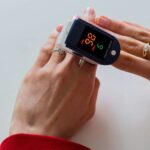The 72 million Boomers in the US represent one of the largest generations. And, they are still the wealthiest generation, holding $3.2 trillion in direct spending power and more than 54% of household wealth. As they get older they will need caregivers whether hired, professionals, or family members. But even before they may be ready for these caregivers globally, we are already suffering from a caregiver shortage.
According to AARP, 77% of adults 50 and older desire to stay in their homes as they age. Yet, the American Health Care Association (AHCA) and National Center for Assisted Living (NCAL) report cites a steady decrease in workforce levels at nursing homes nationwide (a net loss of 220,000 jobs between March 2020 and October 2021) and in assisted living (a net loss of 38,000 jobs during that time frame). Many people agree that in many cases caregivers are under-compensated for the work they do. Yet, frequently the people needing these services can’t afford to pay more. When the financial burden is too great, caregiving falls on the nation’s 53 million family caregivers. Family caregivers provide an estimated $470 billion worth of free care—often at great personal cost. This is a problem that begs for a solution. The combined long-term care and home-based care for those aging in place totals $390B according to Pivotal Ventures research.
Health care providers and Medicare rarely pay for long-term care in nursing homes or in-home help. Even private long-term-care insurance sometimes doesn’t cover all these costs. But the need for professional caregivers, caregiving skills, and tools will become greater with each year that passes. If something isn’t done to address this need not only will older people lack the care they need but it can put unnecessary health strain on younger caregivers and create more health problems than health benefits.
Technology can assist in caregiving
Technology can assist to help lighten the caregiving burden for caregivers. This will help with member retention and engagement too if caregivers can see health benefits and receive the necessary support to help fill the care gaps. Plus technology can help empower older people to manage some of their own care better. They can learn to monitor their health, manage their own care plans, and connect directly with medical professionals from their homes.
There are a variety of tech tools that can be utilized in one’s home to help address caregiving burdens. If health care providers encourage the use of these tools and help their members be educated on how to effectively use them to improve aging health, they can have life-altering impacts.
Smart Homes – Smart tech can help make older people’s homes more age-friendly. While smart tech requires an initial investment in the long run it can help you save money on bills, reduce travel time, and prevent needless worry.
- Fall Prevention – Voice command or motion-detecting devices can allow you to turn lights on and off without risking a fall from walking in the dark.
- Reduce Costs – Smart thermostats and other smart electronics can be connected to apps on one’s phone. Caregivers or older adults can turn devices on and off from anywhere to save on expenses, especially when no one is home.
- Set Reminders – Voice assistants can remind people to take their medicine on time and not forget important medical appointments.
- Monitoring Movements– Smart doorbells can let residents see who is at the door without opening it. Cameras can also be used to help monitor older adults when caregivers can’t be there.
- Safety – Smart locks can lock doors automatically when people leave, allow for select people to come and enter a home without keys, and provide a simple solution to forgotten keys, especially when multiple people have codes.
Health Tech – People are paying more attention to their health from gadgets like smartwatches, monitors, and telehealth. These devices allow medical professionals, loved ones, and patients to monitor health around the clock. Some of these health tech options are even available free or at a reduced cost in select Medicare Advantage plans.
- Smartwatches and other devices can help monitor health and send alerts to doctors and other people if there are complications. These services can alert to increases in heart rates, falls, and other shifts in health depending on the device.
- Telehealth appointments can help allow for therapy and simple check-up visits or returns to be done from the living room without extra travel. This reduces costs for both patients and medical professionals. Plus it allows medical professionals to attend more patients in the same time frame than they could if they needed to relocate regularly.
Social Tech – More and more people are turning to virtual means to connect, make friends, learn new skills, and find a sense of purpose. Socialization is not frivolous as social isolation “increases the risk of premature death from every cause for every race,” according to a 2019 study. While many people remember to stay physically and mentally fit one of the key social determinants of health is the social and community context. Offering opportunities to address this virtually can help create health equity for many people, especially those with limited mobility, special needs, and who have other mitigating circumstances. Virtual learning and social interaction not only provide fun activities but can offer key resources for care management, health literacy, and health education to help assist in managing chronic diseases and adhering to both outpatient and long-term care plans.
- Online Communities provide a sense of purpose and passion. Communities like GetSetUp offer a safe space for older adults to learn, share, and create with peers.
- Virtual Learning can help those being cared for learn skills that can make them more independent like how to use Uber to get to doctors’ appointments or to make video calls to help make caregiving check-ins easier.
- Brain and Physical Health – Virtual learning helps with brain health and virtual fitness classes can be tailored to include classes in seated positions for those recovering from surgeries who require specific outpatient activities.
Customizable virtual classes on topics like Health Tech or Digital Tools for Caregivers allow multiple members the opportunity to learn together how to age healthier and happier. This helps reduce cost for plans, offers health education, and assures the adherence of care plans. Ultimately impactful ongoing virtual care in an empowering environment can increase CMS star ratings and help to foster better relationships between healthcare providers, medical professionals, caregivers, and members.
















